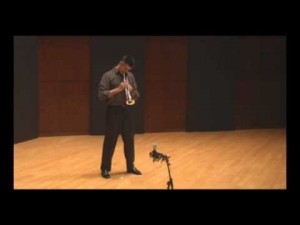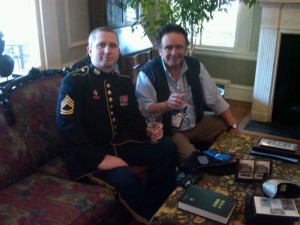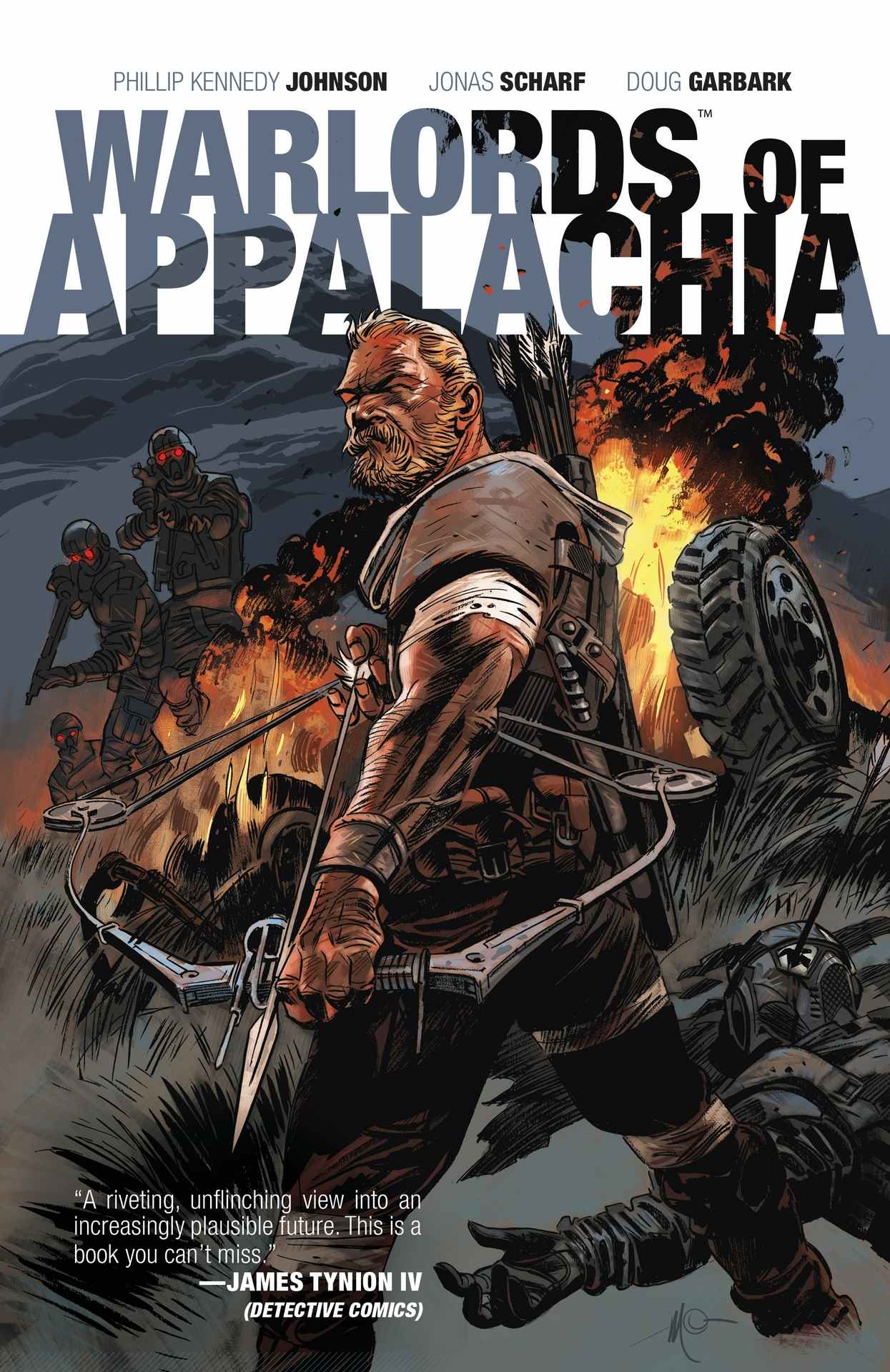 To make the most out of an ITG Conference, you have to prioritize.
To make the most out of an ITG Conference, you have to prioritize.
Go through your schedule and mark every clinic, masterclass, recital and concert you cannot miss. With the time slots remaining, mark the events you’d love to see. Then, in the margin, make a list of unscheduled priorities (Buying an E-flat trumpet, getting a lesson with Tom Hooten, talking with Marvin Stamm, updating your Brass Quintet sheet music library, etc) and allow some time to do those things. If possible, figure out when you’re going to eat, or just load your trumpet case with protein bars if proper meals aren’t an option.
My number-one, cannot-miss event for the week was yesterday’s recital by Frank Campos, entitled “Art of the Single Line.” Frank prepared an entire recital of unaccompanied trumpet. For any non-brass players reading this, this is difficult mainly for two reasons: Trumpet is a demanding instrument, and playing a 45-minute recital without the support of a piano, ensemble or rhythm section is extremely taxing. The other reason is: The pieces he chose to play weren’t originally meant for solo trumpet.
Frank didn’t play Charlier etudes, or the Persichetti “Parable,” or Stanley Friedman’s “Solus.” He played “Flight of the Bumblebee,” and the violin theme from Ken Burns’ Civil War series, and Charlie Chaplin’s “Smile,” and several others. This means he had to play the melody, keep clear time, and imply the underlying harmony all at once with no more time to rest than it takes to snag a quick breath, one tune after another.
As a superfan of Bobby McFerrin, I’ve experimented with this kind of playing myself, and once fantasized about playing whole gigs this way. But Frank’s recital was the first time I’ve seen anyone gather the stones to get up and do it, in front of a house of trumpet players, no less. He pulled it off very effectively, and it renewed my desire to explore improvised solo-line music.
After Frank’s recital was a 50-minute clinic by Keith Johnson, which basically summed up his approach to trumpet pedagogy. As a Keith Johnson student and devotee, it wasn’t anything I hadn’t seen a hundred times (and taught a thousand more). Still, it was refreshing to see him teach again, especially in a studio theater filled with other Johnson students and students of their own.
After Keith’s clinic was a lecture recital on the Cincinnati brass band tradition by another old friend and colleague from UNT, Racquel Rodriguez, now Professor of Trumpet at Northern Kentucky University. Virtuosic cornet solos have been Racquel’s specialty for a long time, and nobody’s better suited to give a presentation like that.
The Opening Concert featured the Maneuvers Center of Excellence Band from Ft. Benning, Georgia, with soloists Rob and Lauren Murray and Marvin Stamm. Marvin was one of the first A-listers I ever performed with, and it’s always a privilege to hear him improvise.
This morning, rehearsals began. All of the Army Field Band trumpets were invited to perform on the Festival of Trumpets, the final concert which traditionally features about 50 professional trumpet players and teachers. Aside from the Hoffnung Fanfare (which incorporates everyone), my two pieces are “Short Stop” and “Crisis,” both jazz pieces written for four trumpets and rhythm section. Between the two pieces, most regions of the U.S. are accounted for: Ken Trimmins of Albany State University (Georgia), Nick Volz of Loyola University New Orleans, Tim Weir of Australia by way of the University of Maine-Augusta, Dean Haist of Nebraska Wesleyan University, Mark Schwartz of Scottsdale, Arizona, and Frank Campos of Ithaca College (New York), the performer from yesterday’s terrific solo recital.
After my rehearsals, I manned the Army Bands booth for a while, unfortunately missing both the U.S. Army Brass Quintet and Marvin Stamm’s Inventions Trio. But I had a window of free time at mid-day, and through dumb luck I wandered into a great story.
Yesterday I learned to steer clear of the Civic Center Concession Stand, so today I left the building to find a late lunch. I soon crossed paths with the great Claudio Roditi, a trumpet player I’ve admired since discovering him at 18. I saw a VHS of Claudio with Dizzy Gillespie’s United Nation Orchestra, and have collected his recordings ever since.
 I told him how much his playing meant to me in college, managed to get him telling stories, and I ended up listening all the way to his Bed & Breakfast. He, the innkeeper and I sat around talking for an hour before heading back for his rehearsal. He told me about touring with Dizzy, the story of Arturo Sandoval’s defection from Cuba, about our shared love for Art Farmer, about Claudio’s education and how he came to play rotary trumpets, and much more. He gently corrected me when I used the catch-all term “latin music” to describe what I should’ve called a rhumba, and stressed the importance of knowing the subtle differences between the many kinds of latin rhythms and styles. Claudio’s a beautiful person, with a great love and understanding of music, and I encourage everyone reading this to seek out his work.
I told him how much his playing meant to me in college, managed to get him telling stories, and I ended up listening all the way to his Bed & Breakfast. He, the innkeeper and I sat around talking for an hour before heading back for his rehearsal. He told me about touring with Dizzy, the story of Arturo Sandoval’s defection from Cuba, about our shared love for Art Farmer, about Claudio’s education and how he came to play rotary trumpets, and much more. He gently corrected me when I used the catch-all term “latin music” to describe what I should’ve called a rhumba, and stressed the importance of knowing the subtle differences between the many kinds of latin rhythms and styles. Claudio’s a beautiful person, with a great love and understanding of music, and I encourage everyone reading this to seek out his work.
